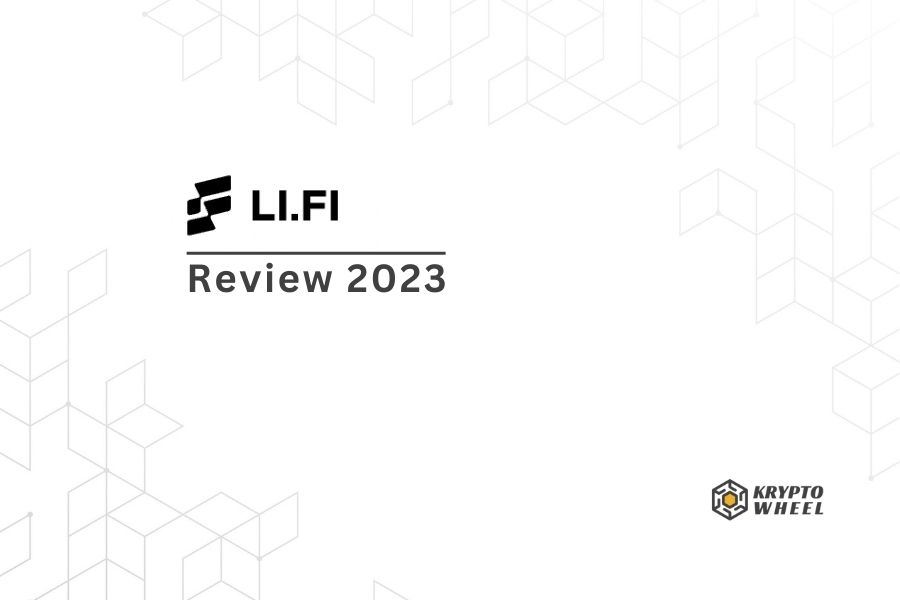
Li-Fi: Bridging the Gap in Cross-Chain DeFi Ecosystems
- Antonio Anderson
- April 8, 2023
- Review
- blockchain, Cross-chain DeFi, defi, digital assets, Li-Fi
- 0 Comments
By 2030, the market for blockchain technology is expected to have reached USD 10.02 billion, growing at an annual compound growth rate of 87.7%. With such a vast ecosystem, it’s no surprise that cross-chain strategies have become essential for developers and users alike.
However, with so many chains, protocols, and platforms to navigate, it can be difficult for developers to create cross-chain dApps that are accessible and user-friendly.
In this article, we’ll dive into Li.fi’s features, use cases, and supported wallets, and explore why Li.fi is the go-to solution for developers looking to build powerful, multi-chain dApps.
What Is LI.FI, And How Does It Work?
LI.FI is a cross-chain bridge aggregation protocol with DEX connectivity. It is an innovative solution that aims to revolutionize the way users and developers engage with decentralized finance (DeFi) across multiple blockchain networks.
Its primary goal is to make cross-chain interactions simple and accessible for everyone, empowering users and developers to tap into the vast potential of DeFi without the hassles and complexities typically associated with navigating multiple networks.
To achieve this, Li-Fi combines multiple cross-chain bridges and integrates with decentralized exchanges (DEXes) to create a unified platform for interacting with DeFi assets and opportunities across different blockchains.
This approach eliminates the need for users to manage multiple wallets or navigate various platforms, making it much easier to swap assets, manage liquidity, and employ yield strategies.
At its core, Li-Fi works as a bridge aggregator that connects various blockchain networks, allowing seamless communication and transactions between them. By doing so, users and developers can easily access and participate in cross-chain opportunities without having to worry about the technical challenges of working with different networks.
Moreover, Li-Fi offers a user-friendly interface that simplifies the entire process, making it accessible to both experienced DeFi users and newcomers alike.
Now let’s take a look at what LI.FI promises to offer its users.
Li.fi’s Use Cases
Li.fi’s advanced bridging and swapping capabilities make it a powerful tool for a wide range of use cases in the DeFi ecosystem.
- DeFi Protocols: Li.fi enables DeFi protocols to drive cross-chain strategies by offering asset swaps across multiple chains, as well as allowing users to bridge directly on their page, simplifying user onboarding.
- NFT Marketplaces: Li.fi makes it easy for NFT marketplaces to allow users to buy NFTs with funds from any chain. This feature enables users to easily purchase NFTs without worrying about the underlying chain.
- DEXs & DEX Aggregators: Li.fi enables DEXs and DEX aggregators to connect their deployment, letting users bridge and swap assets across multiple chains, thereby expanding their user base.
- Dapps & Web 3.0: Li.fi’s aggregated bridging and swapping capabilities make it easy for Dapps and Web 3.0 platforms to facilitate user onboarding and stop sending users away to different interfaces for bridging and swapping.
Li.fi’s advanced bridging and swapping capabilities make it a versatile tool for a wide range of use cases in the DeFi ecosystem, from driving cross-chain strategies to facilitating user onboarding and enabling asset swaps across multiple chains.
Weighing the Benefits and Drawbacks of LI.FI
Benefits:
- Seamless cross-chain functionality, making it easy for users to access opportunities across multiple blockchains.
- Simplified asset management and yield strategies, allowing users to maximize their returns in the DeFi landscape.
- Developer-friendly tools, enabling developers to build cross-chain applications with ease.
- Enhanced user onboarding and product extension capabilities, fostering widespread adoption of DeFi and the growth of the multi-chain world.
Drawbacks:
- As a relatively new platform, Li-Fi’s long-term stability and success will depend on its ability to adapt to the rapidly changing DeFi landscape.
- Interoperability between different blockchain networks may still face challenges, such as differing consensus mechanisms and varying levels of decentralization.
Who Benefits Most from LI.FI?
Both users and developers stand to benefit significantly from Li-Fi’s cross-chain aggregation protocol:
For users: Li-Fi offers a seamless experience for users looking to access cross-chain opportunities, enabling them to swap assets, manage liquidity, and employ yield strategies across multiple blockchain networks with ease.
Similarly for Developers: LI.FI offers a product suite designed to help developers build highly connected applications, addressing the challenges associated with integrating bridges and DEXes.
The LI.FI product suite includes:
- An adaptable smart contract — This enables seamless interaction between various bridging solutions.
- A smart routing backend — This assists in identifying the most efficient path for any on-chain or off-chain cross-chain exchanges.
- A JavaScript SDK — The LI.FI SDK combines the adaptable smart contract and the intelligent routing backend for easy integration.
- A user-friendly widget — As UX enthusiasts, we aim to support developers in delivering an enjoyable user experience with our tailor-made widget.
Final Words
As the DeFi ecosystem continues to evolve, cross-chain interoperability will play a crucial role in shaping the future of decentralized finance.
Li-Fi’s innovative approach to bridging the gap between different blockchain networks positions it as a frontrunner in the race to create a truly interconnected multi-chain world.
By offering a seamless, user-friendly experience and developer-friendly tools, Li-Fi has the potential to drive the widespread adoption of DeFi and shape the future of finance.





